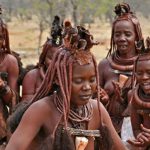Similarities between ancient Malawi’s Nyangu, Isis, Ra & obelisks
Published on June 27, 2014 at 8:03 AM by Face of Malawi
A young trainee Malawian healer is led by her teacher to sit in an open space on a white chair and enjoy the weather on a good warm but cloudy day.
All of a sudden the sun peaks from the clouds and hits her face so that she could feel its warm. Closing her eyes to avoid looking directly at the sun as she fears getting blind, the young woman enjoys its warm.
Then all of a sudden she feels the heat leaving and opens her eyes to see black clouds covering part of the sun and making the place warm again.
As simple as this sounds, the vision is an important lesson for the young healer….it teaches her how positive and negative energy worked in that example of the bright sun and black clouds which also appear when it’s about to rain after heat.
This was one of the ancient teachings of Mbona when he pointed his two-edged knife locally known as kandalanga which resembled a sword to the North for hot winds to usher in rain from Chauta, Namalenga, Mphambe (God).
This belief system is similar to ancient Egyptian solar deity known as Ra. By the Fifth Dynasty (2494 to 2345 BC) he had become a major god in ancient Egyptian religion, identified primarily with the midday sun.
According to the same Wikipedia source the major cult centre of Ra was Heliopolis (called Iunu, “Place of Pillars”, in Egyptian), where he was identified with the local sun-god Atum.
“Through Atum, or as Atum-Ra, he was also seen as the first being and the originator of the Ennead, consisting of Shu and Tefnut, Geb and Nut, Osiris, Set, Isis and Nephthys.
The cult of the Mnevis bull, an embodiment of Ra, had its centre in Heliopolis and there was a formal burial ground for the sacrificed bulls north of the city.
“All forms of life were believed to have been created by Ra, who called each of them into existence by speaking their secret names. Alternatively humans were created from Ra’s tears and sweat, hence the Egyptians call themselves the “Cattle of Ra.”
“To the Egyptians, the sun represented light, warmth, and growth. This made the sun deity very important, as the sun was seen as the ruler of all that he created.

“The sun disk was either seen as the body or eye of Ra. Ra was the father of Shu and Tefnut, whom he created. Shu was the god of the wind, and Tefnut was the goddess of the rain. Sekhmet was the Eye of Ra and was created by the fire in Ra’s eye.
“She was a violent lioness”, further reads the Wikipedia which also explains when Ra was in the underworld he merged with Osiris, the god of the dead, and through it became the god of the dead as well.
Ra is also mentioned online in the story of how he gave his secret name to Isis by saying, “Let Isis come with me, and let my Name pass from my breast to her breast” as quoted in the linkhttp://www.sacred-texts.com/egy/ael/ael13.htm
Now once upon a time before “civilization” was brought to Malawi by western nations, there were several beliefs connected to ancient female priestesses of Malawi like the first Nyangu who fell from grace.
She’s a mythical water spirit and when she appeared above which is on land and at the mythical astral real of Sapitwa, it would represent the belief system that spirits appear above on hills or high mountain tops of Mulanje Mountain and below in the water like in Dziwe la Nkhalamba.
Now when she pointed her right hand up and the left one down it would symbolize her taking of energy among other things to empower herself and make her stronger by using a narrow necked calabash locally known as Nsupa which female healers have not used since or the harmless nsengwa small basket.
Today only a few male Malawi healers who use the “magicial” Nsupa made from the African wine kettle gourd which some ancient Malawi’s “kings’ used for drinking wine made from tea like leaves and lemon mixed with sugar cane juice.
Ancient Malawi’s “So above as below” symbol also meant that sometimes what goes up must come down just like in the way the mythical Napolo serpent leaves the mountain by travelling in a straight line to water bodies which lead to the Indian Ocean.
This Napolo serpent associated with rain, thunder, lightning, landslides and earthquakes among so many other things in ancient times had many names.
One of those names was a secret name used in ancient magic (matsenga) rituals where ancient priests and priestesses would go outside their human power and tap into the energy of spirits (mizimu) who consisted of 7 with 4 being positive male winged spirits and 3 negative female winged spirits.

In that spiritual realm there was also the first Nyangu and Mbewula among others and this first Nyangu whom in other cultures would be called a “goddess” was sexually intimate with three of those spirits.
These included the elderly one of Dziwe la Nkhalamba whose name is hidden, his brother Mbewula who fought with him and the ancient spirit of Mbona one of the ancient 7 who was born again as a human like ancient Malawi’s first Nyangu.
Originally she was only the “wife” of the ancient one of Dziwe la Nkhalamba but she cheated on him and had sexual relations with his brother and her brother…..Mbona… all of whom were circumcised and their symbol resembled what is globally known as an obelisk.
Today that is a disgusting crime called incest and in ancient Malawi the beginning of ufiti (witchcraft) and kukhwima rituals (charms) where some witch-doctors prescribe incest for some evil charms to work.
They argue that in the same way a black rooster can mate with its hen mother etc so should those who consult them and vice versa….very disgusting.
The idea was that there was power and energy in her forbidden fruit and that is how the first Nyangu and the elderly spirit charged themselves till she fell from grace.
Symbols involved with that include two mating serpents which many Sapitwa healers find vulgar and pornographic when displayed in public as that is the ancient Malawi myth involving such two beasts (zirombo) which was a name given to the spirits (mizimu).
However, one female Sapitwa healer insists there is only one upright serpent used for healing and the symbol of most asing’anga involved in healing and not the two mating snakes.
“The caduceus is often used incorrectly as a symbol of healthcare organisations and medical practice (especially in North America) due to confusion with the traditional medical symbol, the rod of Asclepius, which has only one snake and is never depicted with wings,” partly reads http://en.wikipedia.org/wiki/Caduceus

The lone serpent is similar to ancient Greece’s Rod of Asclepius and the secret name of ancient Malawi’s elderly spirit was his member in a certain Malawian language but the ancient version.
This name was recited in rituals and songs and dance to invoke his power and energy. Its symbol was drawn as an obelisk to represent a man’s member.
Again the idea of “as above, so below” in the vernacular flowed and from the wording one can draw their obvious conclusions. Elsewhere the term “as above, so below” is circulated throughout occult and magical circles (matsenga) and recorded in Hermetic texts but unlike with ancient Africa they are attributed to men.
Much of the importance of Hermeticism arises from its connection with the development of science during the time from 1300 to 1600 A.D. The prominence that it gave to the idea of influencing or controlling nature led many scientists to look to magic and its allied arts (e.g., alchemy, astrology) which, it was thought, could put Nature to the test by means of experiments.
The same Wikipedia also claims that consequently it was the practical aspects of Hermetic writings that attracted the attention of scientists.
“Isaac Newton placed great faith in the concept of an unadulterated, pure, ancient doctrine, which he studied vigorously to aid his understanding of the physical world.
“Many of Newton’s manuscripts—most of which are still unpublished—detail his thorough study of the Corpus Hermeticum, writings said to have been transmitted from ancient times, in which the secrets and techniques of influencing the stars and the forces of nature were revealed.”

